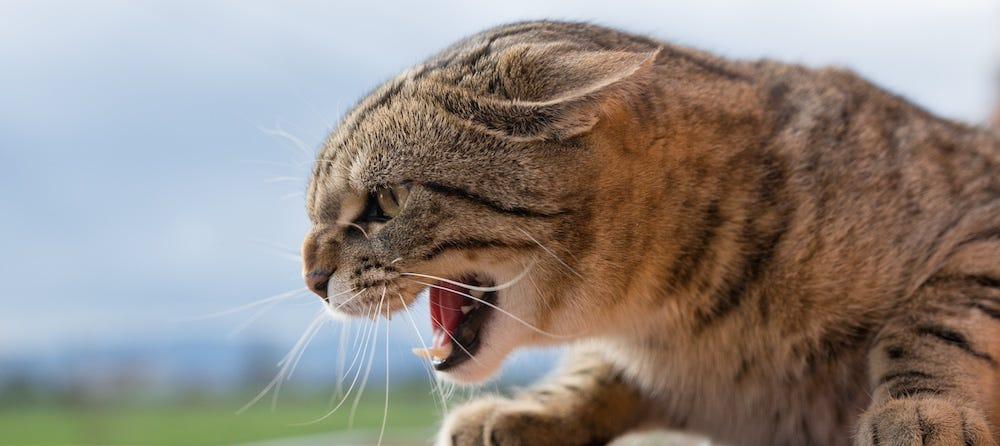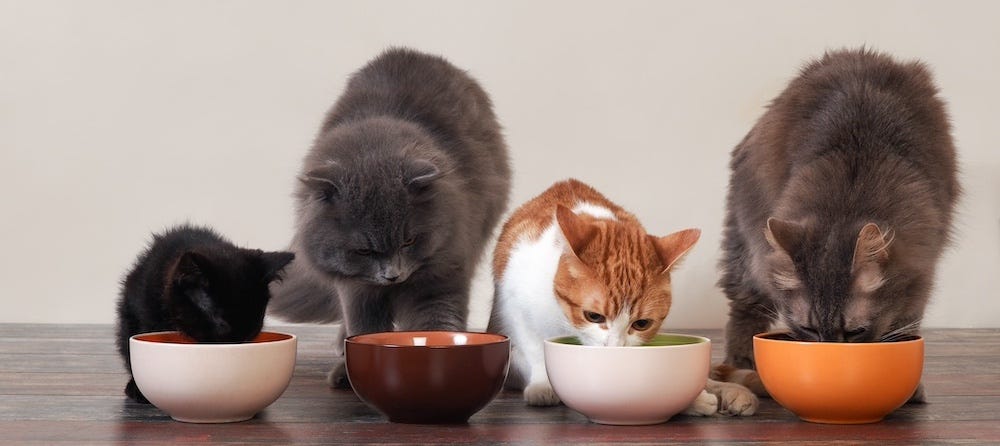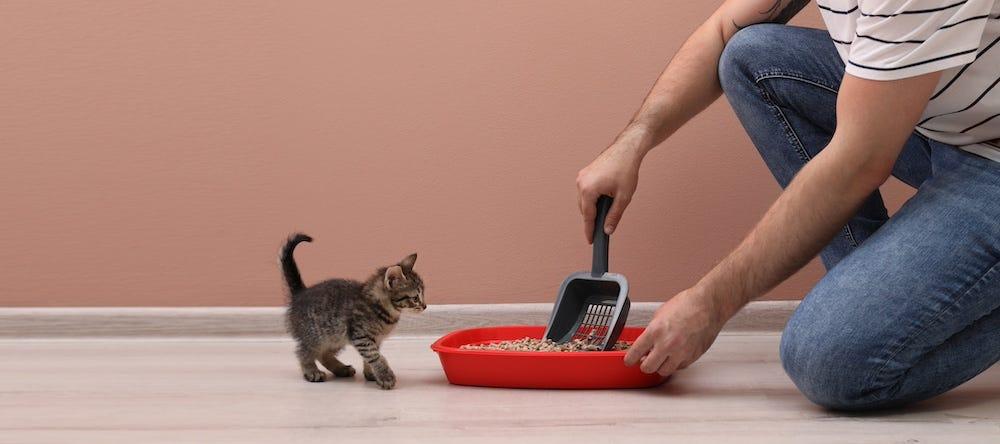The hot product in cat accessories these days is the food puzzle. Yes, it’s a toy and a feeding device. And not just any toy—it’s a toy your cat has to figure out in order to get a treat. Food puzzles make cats work for a snack while simultaneously building their brainpower. In short, the food puzzle is a toy for smart kitties.
(Not So) Smarty Cats
The theory behind food puzzles is that housecat life is a formula for kitty tubbiness and intellectual torpor—but puzzles keep cats on the move and strategizing. (If you’re not sure what torpor is, ask your cat—she knows!) Cats are natural predators who, in the wild, ordinarily must work hard for their meals. Lying in wait for mice, voles, moles, birds, and other prey to slip up is tiring, and even if a mouse darts by, a cat has no guarantee of a meal—after all, the mouse works just as hard to avoid being eaten as the cat works to catch it.
Housecats, in contrast, don’t have to work for their meals. If we ever needed proof of cats’ inherent smarts, self-domestication has to be it. Most housecats get, every day, a can or two of wet food on demand, or dry food, or some combination, plus treats, without expending a lick of physical or intellectual energy. (Other than meowing piteously, of course, or deploying the “feed me” purr.) They also get streaming TV and a warm place to sleep. But, as much as domestication has improved cats’ chance of survival, the downside has been fewer opportunities to exercise their muscles and brain cells.
Enter: The Food Puzzle
One of the most common food puzzles for cats is a colorful sphere that you twist open and fill with dry food or cat treats. As your cat pushes the ball around your home, treats or food nuggets fall out of a hole onto the floor, where your cat scarfs them up. Once Kitty figures out the trick, you make things a bit more difficult. Inside the sphere is an opaque compartment with holes of adjustable sizes. You fill this inner compartment with food or treats and then adjust the size of the holes so they’re big enough for food to pass into the main compartment but not so big that it falls out all at once.
Then: roll the ball to Kitty. Depending on how quickly she adjusts to the bump in difficulty, she may initially need several hours to get the food out of the ball but may eventually be able to extract the food in less than an hour. Or, if she’s Yale material, she may even get it down to a few minutes. But regardless of how quickly she empties out the toy, she’ll need to expend calories in order to get a meal.
Imagine if our human gyms worked that way. We’d be there night and day, treadmilling and spinning and Zumba-ing until we’d burned enough calories to deserve breakfast. We’d no longer have cause for guilt over wasting our membership dollars after only a month or two.
Food puzzles for cats go beyond sphere puzzles like these and these. For example, there are box puzzles and interesting pointy-looking puzzles that are dishwasher-safe. Different puzzles may appeal to different cats. Most are fairly cheap—ranging from $5 to $20—so you won’t be losing a huge investment if Kitty doesn’t like a particular toy or if, in some cases, she tears it apart. (Most food puzzles get good customer reviews, but occasional buyers note that their cats have been frustrated by the puzzles and, instead of figuring them out, have actually destroyed them.)
By the way, if you’re wondering what human marketer had the ingenuity (or the endless leisure time—first-world problems!) to think up food puzzles for cats, you shouldn’t. Rats have been solving food puzzles since the dawn of psychology. The maze that’s a staple of New Yorker cartoons is actually a food puzzle—who knew? And now there are commercially available rat food puzzles. You can buy or make your own dog food puzzles. Even lizards are getting in on the food puzzle game. (Careful: this last one involves larvae.)
One caveat: This week Callie latched onto a supply of Contempo Ciro Rolling Food and Treat Dispensers on sale at a chain store for 99 cents—a steal compared to five bucks online. The Ciro was easy to open and fill with dry cat treats. But Callie’s (playful and always hungry) pal Carlos wouldn’t touch it. In fact, he seemed repelled. Turns out the yellow ones smelled strongly of mold or something petroleum-ish. It may have been just these ones I picked up (and thus the heavy discount), but the pink ones smelled fine.






